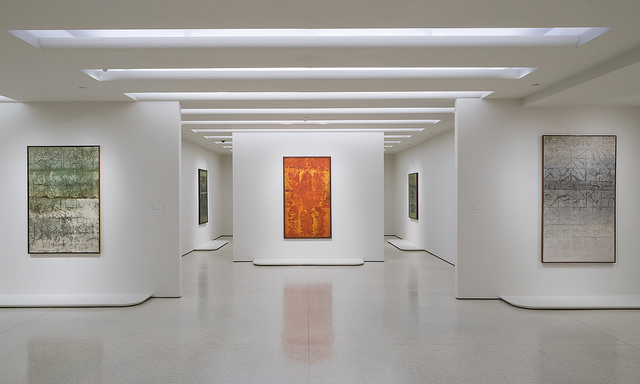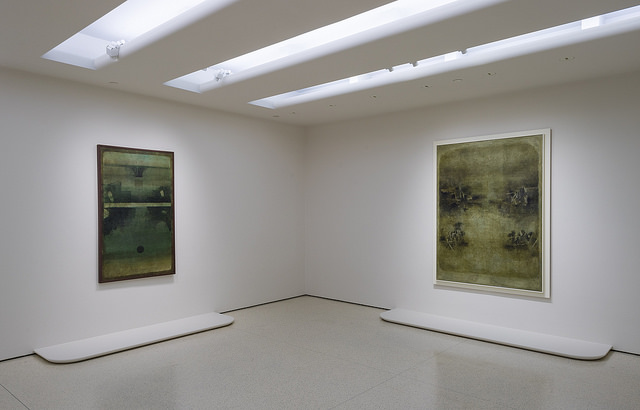
Breathtaking exhibition welcomes visitors into the meditative world of Indian painter V. S. Gaitonde (photo by David Heald)
Solomon R. Guggenheim Museum
1071 Fifth Ave. at 89th St.
Friday – Wednesday through February 11, $18-$22 (pay-what-you-wish Saturday 5:45-7:45)
212-423-3587
www.guggenheim.org
“I don’t work, I relax and wait, and then I apply some paint on the canvas. The most important aspect of painting is waiting, waiting, waiting, between one work and the next,” Indian painter V. S. Gaitonde said shortly after winning the 1989–90 Kalidas Samman prize in the plastic arts. That quote is also good advice as to how his magnificent canvases should be experienced. Nearly four dozen of the Indian artist’s paintings and works on paper are on view in “V. S. Gaitonde: Painting as Process, Painting as Life,” continuing at the Guggenheim through February 11. This first-ever major museum career retrospective introduces audiences to the unique style of Vasudeo S. Gaitonde, called “Gai” by his peers, who was born in Maharashtra in 1924 and passed away in August 2001. Gaitonde, who made only a handful of paintings every year, was influenced by Paul Klee and Mark Rothko, Zen Buddhism and silence, Japanese and Chinese hanging scrolls and calligraphy. He referred to his work, which began with more figuration, as “non-objective” instead of “abstract,” so it is fitting that the survey is being held at the Guggenheim, which opened as the Museum of Non-Objective Painting in 1939 on East Fifty-Fourth St. Little is known about Gaitonde’s life outside of painting, and his work is as mysterious as the man. Using multiple layers of paint, strips of wet newspaper, and a palette knife, Gaitonde created primarily untitled oil on canvas paintings, watercolors, and ink on paper drawings boasting unique combinations of color, form, and texture. The works have both a physical and metaphysical depth, daring the viewer to breathe it all in. The exhibition, curated by Sandhini Poddar, occurs at a time when Gaitonde’s work is now selling in the millions at auction; a 1979 painting recently went for $3.8 million, the most ever paid for a work by a modern Indian artist.
In one fiery orange painting, a sun rises over an amalgamation of what could be body parts. In another, it looks as if Gaitonde has torn through an earth-toned canvas. In a third work, four arrows point at a central circle, coming together like a totem. Poddar, who had quite a task collecting the works, lays out the aptly titled exhibition beautifully, inviting visitors to take their time as they discover the many wonders of Gaitonde’s pure, impressive skill, revealing that his process was life, and life was his process. “A painting always exists within you, even before you actually start to paint,” he said. “You just have to make yourself the perfect machine to express what is already there.” What is already there is a love of pure painting that is now, at last, getting its due.
